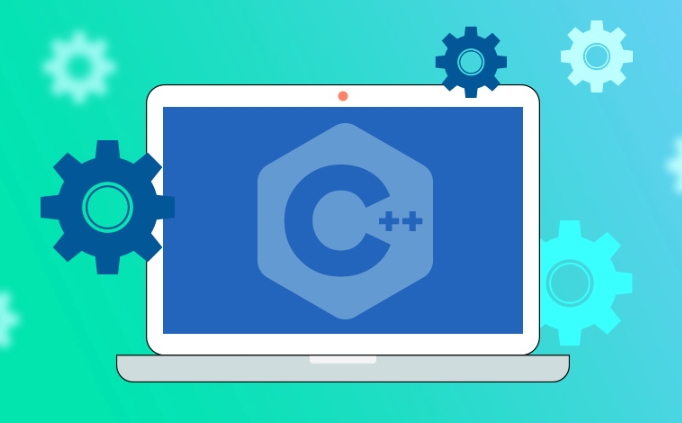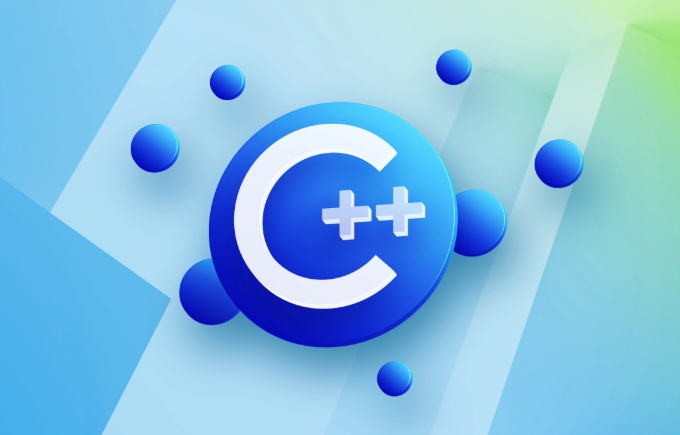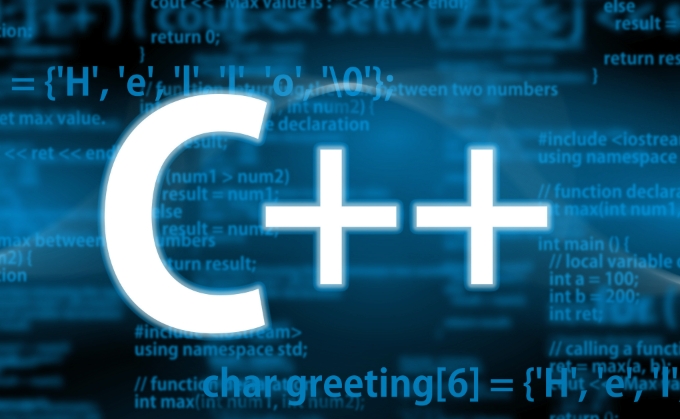C is used for building high-performance applications where control over system resources and efficiency are critical. It is widely adopted in game development, powering engines like Unreal and enabling fine-tuned performance for complex graphics and physics handling. It is also used in system and application software, including operating systems like Windows and macOS, as well as performance-sensitive tools like Adobe Photoshop. Additionally, C plays a key role in real-time simulations and high-frequency trading due to its low-latency execution and deterministic behavior. Furthermore, it underpins performance-centric libraries and frameworks such as TensorFlow and OpenGL, making it a foundational language across industries where speed and hardware-level control are essential.

C is used for building high-performance applications where control over system resources and efficiency are critical. It’s a statically-typed, compiled language that supports both object-oriented and low-level memory manipulation, making it ideal for systems/software development, game engines, real-time simulations, and performance-critical applications.

Game Development
One of the most well-known uses of C is in game development. Game engines like Unreal Engine are built using C , and many AAA games rely on it to manage complex graphics, physics, and input handling efficiently.

- It allows developers to fine-tune performance and manage memory manually.
- C integrates well with hardware-level systems, which is crucial for achieving smooth gameplay and high frame rates.
- Many game consoles also support development in C due to its performance characteristics.
If you're getting into game dev, learning C will give you access to powerful tools and deeper understanding of how games really work under the hood.
System and Application Software
C is widely used in developing system/software drivers, operating systems, and core components of applications. Windows, macOS, and Linux all have parts written in C . Similarly, major software like Adobe Photoshop and Illustrator use C for their performance-sensitive features.

- It gives developers direct access to hardware via pointers and memory management.
- Writing efficient code for resource-constrained environments becomes more manageable.
- It's commonly used in embedded systems and firmware development as well.
This makes C a go-to choice when you need speed and reliability from the ground up.
Real-Time Simulations and High-Frequency Trading
In industries where split-second decisions or accurate modeling matter—like finance or engineering—C plays a big role.
- High-frequency trading platforms use C to minimize latency and maximize throughput.
- Simulation software for physics, weather modeling, or flight training often relies on C for computational intensity and deterministic behavior.
Because it compiles to machine code and avoids runtime overhead, C ensures predictable and fast execution, which is essential in these domains.
Performance-Centric Tools and Libraries
Many libraries and frameworks that power other languages (like Python) are actually implemented in C underneath. For example:
- Machine learning libraries such as TensorFlow use C for their core computations.
- Graphics APIs like OpenGL and DirectX interface well with C .
- Audio/video processing tools often use C to handle heavy lifting behind the scenes.
This hidden use case shows how deeply integrated C is in the tech stack, even if you don’t always see it directly.
So while newer languages might be easier to pick up, C still holds strong where performance, control, and efficiency really matter. It’s not always the easiest tool, but when you need every ounce of power from your hardware, it’s hard to beat.
The above is the detailed content of What is C used for?. For more information, please follow other related articles on the PHP Chinese website!

Hot AI Tools

Undress AI Tool
Undress images for free

Undresser.AI Undress
AI-powered app for creating realistic nude photos

AI Clothes Remover
Online AI tool for removing clothes from photos.

Clothoff.io
AI clothes remover

Video Face Swap
Swap faces in any video effortlessly with our completely free AI face swap tool!

Hot Article

Hot Tools

Notepad++7.3.1
Easy-to-use and free code editor

SublimeText3 Chinese version
Chinese version, very easy to use

Zend Studio 13.0.1
Powerful PHP integrated development environment

Dreamweaver CS6
Visual web development tools

SublimeText3 Mac version
God-level code editing software (SublimeText3)

Hot Topics
 How to use cin and cout for input/output in C ?
Jul 02, 2025 am 01:10 AM
How to use cin and cout for input/output in C ?
Jul 02, 2025 am 01:10 AM
In C, cin and cout are used for console input and output. 1. Use cout to read the input, pay attention to type matching problems, and stop encountering spaces; 3. Use getline(cin, str) when reading strings containing spaces; 4. When using cin and getline, you need to clean the remaining characters in the buffer; 5. When entering incorrectly, you need to call cin.clear() and cin.ignore() to deal with exception status. Master these key points and write stable console programs.
 What is function hiding in C ?
Jul 05, 2025 am 01:44 AM
What is function hiding in C ?
Jul 05, 2025 am 01:44 AM
FunctionhidinginC occurswhenaderivedclassdefinesafunctionwiththesamenameasabaseclassfunction,makingthebaseversioninaccessiblethroughthederivedclass.Thishappenswhenthebasefunctionisn’tvirtualorsignaturesdon’tmatchforoverriding,andnousingdeclarationis
 What is the volatile keyword in C ?
Jul 04, 2025 am 01:09 AM
What is the volatile keyword in C ?
Jul 04, 2025 am 01:09 AM
volatile tells the compiler that the value of the variable may change at any time, preventing the compiler from optimizing access. 1. Used for hardware registers, signal handlers, or shared variables between threads (but modern C recommends std::atomic). 2. Each access is directly read and write memory instead of cached to registers. 3. It does not provide atomicity or thread safety, and only ensures that the compiler does not optimize read and write. 4. Constantly, the two are sometimes used in combination to represent read-only but externally modifyable variables. 5. It cannot replace mutexes or atomic operations, and excessive use will affect performance.
 How to get a stack trace in C ?
Jul 07, 2025 am 01:41 AM
How to get a stack trace in C ?
Jul 07, 2025 am 01:41 AM
There are mainly the following methods to obtain stack traces in C: 1. Use backtrace and backtrace_symbols functions on Linux platform. By including obtaining the call stack and printing symbol information, the -rdynamic parameter needs to be added when compiling; 2. Use CaptureStackBackTrace function on Windows platform, and you need to link DbgHelp.lib and rely on PDB file to parse the function name; 3. Use third-party libraries such as GoogleBreakpad or Boost.Stacktrace to cross-platform and simplify stack capture operations; 4. In exception handling, combine the above methods to automatically output stack information in catch blocks
 How to call Python from C ?
Jul 08, 2025 am 12:40 AM
How to call Python from C ?
Jul 08, 2025 am 12:40 AM
To call Python code in C, you must first initialize the interpreter, and then you can achieve interaction by executing strings, files, or calling specific functions. 1. Initialize the interpreter with Py_Initialize() and close it with Py_Finalize(); 2. Execute string code or PyRun_SimpleFile with PyRun_SimpleFile; 3. Import modules through PyImport_ImportModule, get the function through PyObject_GetAttrString, construct parameters of Py_BuildValue, call the function and process return
 What is a POD (Plain Old Data) type in C ?
Jul 12, 2025 am 02:15 AM
What is a POD (Plain Old Data) type in C ?
Jul 12, 2025 am 02:15 AM
In C, the POD (PlainOldData) type refers to a type with a simple structure and compatible with C language data processing. It needs to meet two conditions: it has ordinary copy semantics, which can be copied by memcpy; it has a standard layout and the memory structure is predictable. Specific requirements include: all non-static members are public, no user-defined constructors or destructors, no virtual functions or base classes, and all non-static members themselves are PODs. For example structPoint{intx;inty;} is POD. Its uses include binary I/O, C interoperability, performance optimization, etc. You can check whether the type is POD through std::is_pod, but it is recommended to use std::is_trivia after C 11.
 How does std::move work in C ?
Jul 07, 2025 am 01:27 AM
How does std::move work in C ?
Jul 07, 2025 am 01:27 AM
std::move does not actually move anything, it just converts the object to an rvalue reference, telling the compiler that the object can be used for a move operation. For example, when string assignment, if the class supports moving semantics, the target object can take over the source object resource without copying. Should be used in scenarios where resources need to be transferred and performance-sensitive, such as returning local objects, inserting containers, or exchanging ownership. However, it should not be abused, because it will degenerate into a copy without a moving structure, and the original object status is not specified after the movement. Appropriate use when passing or returning an object can avoid unnecessary copies, but if the function returns a local variable, RVO optimization may already occur, adding std::move may affect the optimization. Prone to errors include misuse on objects that still need to be used, unnecessary movements, and non-movable types
 How to pass a function as a parameter in C ?
Jul 12, 2025 am 01:34 AM
How to pass a function as a parameter in C ?
Jul 12, 2025 am 01:34 AM
In C, there are three main ways to pass functions as parameters: using function pointers, std::function and Lambda expressions, and template generics. 1. Function pointers are the most basic method, suitable for simple scenarios or C interface compatible, but poor readability; 2. Std::function combined with Lambda expressions is a recommended method in modern C, supporting a variety of callable objects and being type-safe; 3. Template generic methods are the most flexible, suitable for library code or general logic, but may increase the compilation time and code volume. Lambdas that capture the context must be passed through std::function or template and cannot be converted directly into function pointers.






